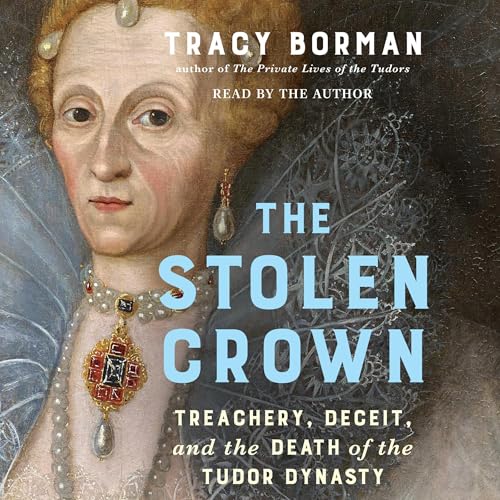
The Stolen Crown
Échec de l'ajout au panier.
Veuillez réessayer plus tard
Échec de l'ajout à la liste d'envies.
Veuillez réessayer plus tard
Échec de la suppression de la liste d’envies.
Veuillez réessayer plus tard
Échec du suivi du balado
Ne plus suivre le balado a échoué
0,00 $ pour vos 30 premiers jours
OFFRE D'UNE DURÉE LIMITÉE
0,99 $/mois pendant vos 3 premiers mois
L'offre prend fin le 16 décembre 2025 à 23 h 59, HP.
Exclusivité Prime: 2 titres
gratuits à choisir pendant l'essa. Des conditions s’appliquent.
Vos 3 premiers mois d'Audible à seulement 0,99 $/mois
1 nouveauté ou titre populaire à choisir chaque mois – ce titre vous appartiendra.
L'écoute illimitée des milliers de livres audio, de balados et de titres originaux inclus.
L'abonnement se renouvelle automatiquement au tarif de 0,99 $/mois pendant 3 mois, et au tarif de 14,95 $/mois ensuite. Annulation possible à tout moment.
Choisissez 1 livre audio par mois dans notre incomparable catalogue.
Écoutez à volonté des milliers de livres audio, de livres originaux et de balados.
L'abonnement Premium Plus se renouvelle automatiquement au tarif de 14,95 $/mois + taxes applicables après 30 jours. Annulation possible à tout moment.
Acheter pour 29,64 $
-
Narrateur(s):
-
Tracy Borman
-
Auteur(s):
-
Tracy Borman
À propos de cet audio
From the acclaimed royal historian, the dramatic and untold story of the lie about the controversial succession that ended the Tudor era and changed the course of British history.
In the long and dramatic annals of British history, no transition from one monarch to another has been as fraught and consequential as that which ended the Tudor dynasty and launched the Stuart in March 1603. At her death, Elizabeth I had reigned for forty-four turbulent years, facing many threats, whether external from Spain or internal from her cousin Mary, Queen of Scots. But no danger was greater than the uncertainty over who would succeed her, which only intensified as her reign lengthened. Her unwillingness to marry or name a successor gave rise to fierce rivalry between blood claimants to the throne—Mary and her son, James VI of Scotland, Arbella Stuart, Lady Katherine Grey, Henry Hastings, and more—which threatened to destabilize the monarchy.
As acclaimed Tudor historian Tracy Borman reveals in The Stolen Crown, according to Elizabeth’s earliest biographer, William Camden, in his history of her reign, on her deathbed the queen indicated James was her chosen heir, and indeed he did become king soon after she died. That endorsement has been accepted as fact for more than four centuries. However, recent analysis of Camden’s original manuscript shows key passages were pasted over and rewritten to burnish James’s legacy. The newly uncovered pages make clear not only that Elizabeth’s naming of James never happened, but that James, uncertain he would ever gain the British throne, was even suspected of sending an assassin to London to kill the queen. Had all this been known at the time, the English people—bitter enemies with Scotland for centuries—might well not have accepted James as their king, with unimagined ramifications.
Inspired by the revelations over Camden’s manuscript, Borman sheds rare new light on Elizabeth’s historic reign, chronicling it through the lens of the various claimants who, over decades, sought the throne of the only English monarch not to make provision for her successor. The consequences were immense. Not only did James upend Elizabeth’s glittering court, but the illegitimacy of his claim to the throne, which Camden suppressed, found full expression in the catastrophic reign of James’ son and successor, Charles I. His execution in 1649 shocked the world and destroyed the monarchy fewer than fifty years after Elizabeth died, changing the course of British and world history.
Pas encore de commentaire


